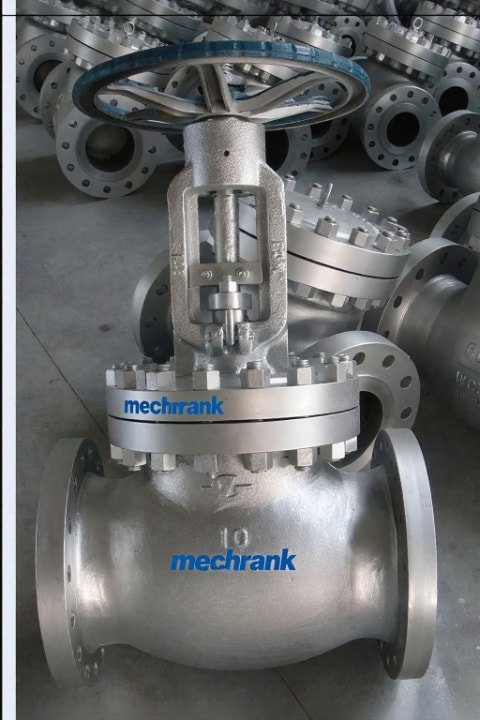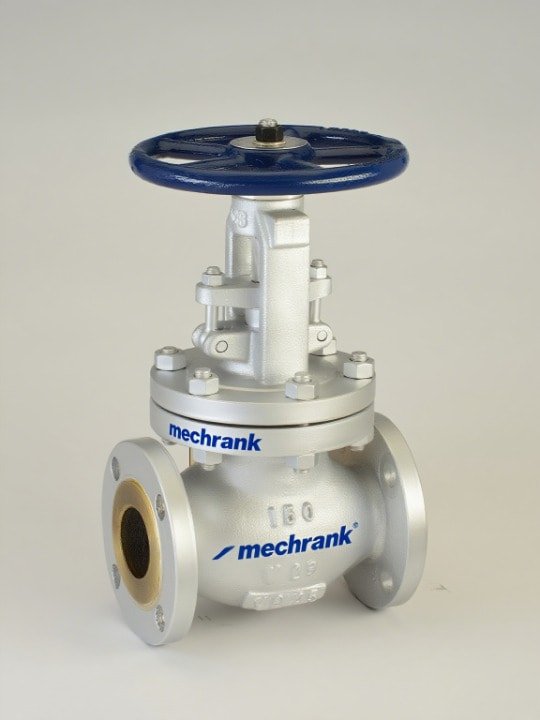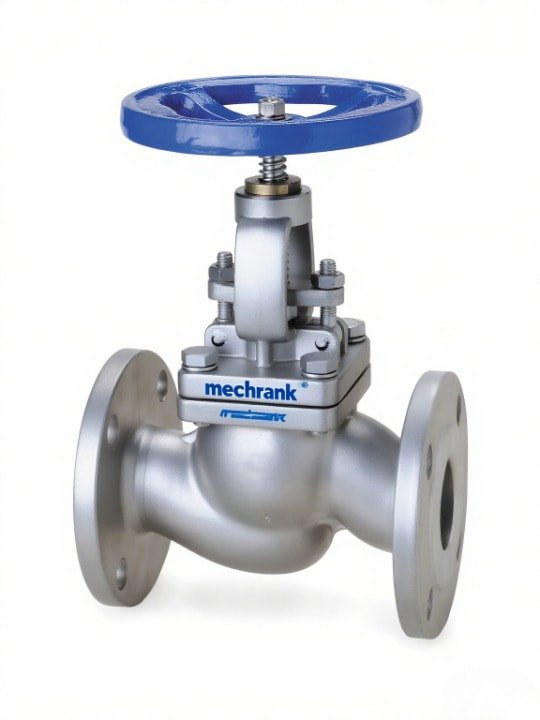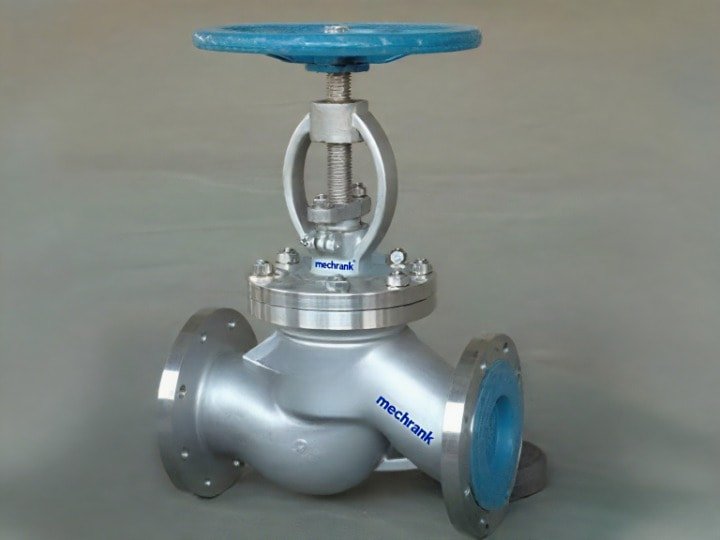A globe valve has a disc that moves up and down. This disc controls how liquids or gases move in a pipe. This valve is good at controlling flow very carefully. Engineers pick globe valves when they need to control flow exactly. The way it is made makes the fluid change direction. This helps the valve seal tightly and keeps its parts from wearing out fast. People use globe valves to stop or change flow in many systems.
要点
Globe valves control flow by moving a disc up and down. This lets you make small changes to liquids or gases in pipes.
People use them in heating, factories, steam, chemical, and testing systems. They give a tight seal and let you control flow well.
There are three main types. Tee pattern gives tight seals. Wye pattern has less pressure loss. Angle pattern saves space and changes flow direction.
Important parts like the body, bonnet, disc, seat, stem, and packing work together. They help seal well, make it easy to use, and stop leaks.
Picking the right valve, putting it in the right way, and checking it often keeps globe valves safe, working well, and lasting a long time.
What Are the Basics of Globe Valve Operation?
A globe valve regulates fluid flow in a pipeline using a movable disk-type element and a stationary ring seat. It is primarily used for throttling purposes.
仕組み
A globe valve has a simple design that controls flow. It has a body, bonnet, stem, disc, and seat. The body holds all the parts together. The round shape comes from the body. The bonnet sits on top and lets the stem move. The stem is attached to the disc. The stem moves the disc up and down.
When you turn the handwheel, the stem moves. The disc goes up or down with the stem. If the disc goes down, it blocks the seat and stops flow. If the disc goes up, fluid can move through the gap. The higher the disc goes, the more fluid can pass. This up-and-down movement gives very good control. The flow changes in a straight line as the disc moves. This helps you make small, accurate changes. The design also makes the fluid turn inside the valve. This causes some pressure to drop but helps keep the disc clean.
ヒント The globe valve’s linear motion is great when you need to adjust flow carefully, not just turn it on or off.
一般的な用途
Globe valves are used in many places for good flow control. People use them at home, at work, and in factories. These valves are best for systems that need careful flow changes.
Heating, Ventilation, and Air Conditioning (HVAC): Globe valves control water or steam in heating and cooling. They can handle up to 1500 psi and many flow rates.
Industrial Plants: Factories use globe valves in oil, gas, power, and chemicals. They are strong and seal tightly, so they are safe for tough jobs.
Steam and Boiler Systems: Power plants use globe valves for steam and water. The control keeps equipment safe and working well.
Chemical Mixing: Globe valves help mix chemicals exactly right in labs and factories.
Sampling Lines: These valves control small flows for tests and checks.
Here is a table that shows where globe valves are used:
Application Area | 説明 |
|---|---|
Process Control | Used for automatic control of flow, pressure, and temperature with actuators. |
High-Pressure Services | Handles tough jobs with strong build and tight seal. |
Steam Systems | Controls steam and drain lines in power plants and factories. |
Boiler Feedwater Systems | Manages water going into boilers for safety and good work. |
Cooling Water Systems | Controls cooling water flow to machines. |
Fuel Oil Systems | Controls fuel oil flow to burners or engines. |
Chemical Processing | Controls chemical flow for careful mixing. |
Sampling Lines | Used for small, exact flows in tests. |
Globe valves are best where safety, accuracy, and easy fixing are important. They can stop flow or change it in small steps. This makes them a top pick for many systems.
What Are the Different Types of Globe Valves?
There are three main types of globe valves: T-pattern, Y-pattern, and Angle-pattern. Each type is designed for specific flow control needs and operational efficiencies.

Tee Pattern
The tee pattern globe valve is the most common type. It is also called the Z-pattern. Its body has a seat that sits flat. The stem and disc move up and down. They move at a right angle to the flow. The fluid must turn twice inside the valve. These turns make a Z-shaped path. This design causes more pressure to drop. It also lets less fluid pass through. But it gives very good control and seals tightly. Many people use the tee pattern in water and HVAC systems. Its simple shape makes it easy to fix. It is also reliable for many uses. The tee pattern is best when you need careful flow control.
注: The tee pattern globe valve is great for medium flow and when you need a tight seal.
Wye Pattern
The wye pattern globe valve is also called the oblique pattern. Its body has ports set at an angle. This design gives the fluid a straighter path.それは lowers pressure drop and helps fluid move better. The wye pattern can stop or control flow. It works well with flows that change quickly. But dirt can build up inside the valve. This can make it less reliable sometimes. Many industries use wye pattern globe valves. They are used in boiler feedwater pumps, steam lines, and heaters. The wye pattern is good when you want less pressure loss and better flow.
Common uses include:
Main steam stop and non-return
Economizer inlet and stop
Angle Pattern
The angle pattern globe valve has a body with a right angle. The fluid only turns once inside the valve. You do not need extra pipe bends or welds. This design lowers turbulence and pressure drop. It makes the system work better. The angle pattern also saves space. It is easy to install in small areas. Many industries use angle pattern globe valves. These include oil and gas, power plants, chemical plants, and water treatment. These valves give good flow control. They work well when the flow direction needs to change.
産業 | Why Use Angle Pattern Globe Valves? |
|---|---|
Oil and Gas | Precise flow control, handles high pressure |
Power Plants | Works with high temperature and pressure, controls steam and water |
Chemical Processing | Resists corrosion, manages aggressive chemicals |
水処理 | Reliable for water flow control, minimal leakage |
What Are the Main Parts of a Globe Valve?
A globe valve primarily consists of the body, bonnet, stem, disc, and seat. These components work together to regulate fluid flow by opening, closing, or partially obstructing passageways.

Body & Bonnet
について body forms the main shell of a globe valve. It holds all the internal parts and connects to the pipeline. Manufacturers use materials like stainless steel, carbon steel, bronze, cast iron, and PVC for the body. These materials resist corrosion, handle high pressure, and last a long time. The bonnet sits on top of the body and covers the valve’s moving parts. Bonnet materials include cast iron, cast steel, stainless steel, and bronze. The bonnet can attach with bolts, welding, or a pressure seal. Bolted bonnets make repairs easier and improve sealing. Welded bonnets give a leak-proof seal for high-pressure jobs. The right choice of body and bonnet materials helps the globe valve work well in tough environments.
パート | Common Materials | Purpose and Benefit |
|---|---|---|
Body | Stainless steel, carbon steel, bronze | Strength, corrosion resistance, pressure tolerance |
Bonnet | Cast iron, cast steel, stainless steel | Protects internals, maintains seal, easy maintenance |
Disc & Seat
The disc moves up and down to control flow. It presses against the seat to stop fluid or lifts to let it pass. The seat is a ring inside the valve body. The shape and fit of the disc and seat are important for sealing. Tapered seats create a tight seal but need the disc to fit perfectly. Wider seats guide the disc better and help with throttling. Some discs have a hollow shape for flexibility, which helps them seal even if the seat is not perfect. Soft inserts on the disc can improve closure and make repairs easier. The design of the disc and seat lets the globe valve control flow and stop leaks.
ヒント A well-designed disc and seat keep the valve tight and reduce wear.
Stem & Handwheel
The stem connects the handwheel to the disc. When someone turns the handwheel, the stem moves up or down. This action opens or closes the valve. The stem must be strong to handle the force needed to move the disc. It also keeps the disc lined up with the seat. In manual globe valves, the handwheel gives a clear sign if the valve is open or closed. Automated valves use actuators instead of handwheels, but the stem still moves the disc.
The stem moves the disc to control flow.
The handwheel lets a person open or close the valve by turning it.
Packing & Gasket
Packing and gaskets stop leaks around the stem and between valve parts. Packing sits around the stem inside the bonnet. Common packing materials include Teflon (PTFE), graphite, and special blends. Teflon seals well and resists chemicals but cannot handle very high heat. Graphite works at higher temperatures but can wear the stem faster. Packing rings are squeezed tight to block leaks. Gaskets seal the joint between the body and bonnet. They must be checked and replaced if worn. Good packing and gaskets keep the globe valve safe and leak-free.
Gaskets seal between the body and bonnet.
Regular checks and replacement prevent leaks.
What Are the Pros and Cons of Globe Valves?
Globe valves offer precise flow control and are highly effective for throttling purposes, but they tend to have higher pressure drops and are relatively complex in design and maintenance.

メリット
Engineers pick this valve when they need to control flow very carefully. Its design lets them make small changes, so it works well in chemical plants, water treatment, and HVAC systems. The valve can seal tightly. Its inside parts help stop leaks, which keeps things safe and saves energy. People can use it to start, stop, or change flow. This makes it useful for many jobs in factories. The seat is lined up with the flow. This stops the valve from wearing out fast and helps it last longer, even with hot or high-pressure fluids. The valve can handle thick, harsh, or hot liquids. It is strong and does not need much fixing. This valve can stay partly open for a long time without breaking, unlike gate or ball valves. This helps control flow better. The pressure drop in the valve slows the fluid down, which can help in some systems.
ヒント Many companies use this valve when they need to stop leaks and control flow exactly, especially for safety.
デメリット
について valve lets fluid move in only one way. This means it cannot be used where flow needs to go both ways. 2. Its shape makes the fluid turn inside, which lowers system power and uses more energy. 3. The valve is bigger and heavier than other valves. It can be harder to put in and may need extra support. 4. It costs more because it is made with more care and has a special design. 5. It may need fixing more often. The many inside parts can wear out or break over time. 6. The valve cannot handle very fast flows. If used wrong, it can get damaged by bubbles or wear. 7. It opens and closes slower than ball or butterfly valves. This can be a problem if you need to move flow quickly.
How Do You Select and Maintain a Globe Valve?
To select a globe valve, consider the type of fluid, pressure, temperature, and valve material. For maintenance, regularly inspect for leaks, clean components, and lubricate moving parts.

Choosing a Globe Valve
Picking the right globe valve depends on many things. You need to know what fluid will go through it. Pressure and temperature are also important. The industry matters too. Stainless steel is good for chemical plants because it does not rust. Forged steel is better for high pressure or heat. PVC works for water pipes with low pressure. But PVC does not last in tough places. The valve size should match the pipe size. This helps stop leaks and keeps flow steady. Some jobs need special valves. Food and drink factories need clean valves. Oil and gas need fire-safe valves.
産業 | 考慮すべき主な要素 |
|---|---|
水処理 | Precise flow control, cavitation resistance, double block and bleed isolation for safety |
ケミカル | Zero-leakage shutoff, lightweight design, handling viscous/slurry flows, specialty designs |
Oil and Gas | High-pressure tolerance, corrosion-resistant materials, fire-safe construction, subsea suitability |
Steam | Tight shutoff, pressure drop tolerance, noise reduction, high-temperature alloys |
発電 | High-pressure and temperature handling, corrosion resistance, special designs for CO2 capture |
飲食 | Sanitary design, corrosion-resistant materials, self-draining features |
Tip: The right material and size help the valve last longer. This also lowers how much you spend fixing it.
Installation Tips
Installing the globe valve the right way is important. Put the valve so flow goes under the seat. Look for the arrow on the valve body. Place the valve sideways with the handwheel on top. This helps the disc close tight. Use pipe supports so the valve does not bend. Leave space for pipes to get bigger when hot. Do not cover the bonnet or handwheel with insulation. This can make them too hot. Before you finish, check for leaks at all seals. Tighten bolts the same amount. Do not make them too tight.
Common mistakes to avoid:
Putting the valve in backwards
Tightening bolts too much
Not checking heat and pressure limits
Maintenance Basics
Taking care of the globe valve keeps it safe and working well. Check the valve at least once a year. Check more often if it handles harsh fluids or high pressure. Look for leaks and worn packing. See if the seat is damaged. Clean the valve and moving parts to get rid of dirt. Put oil on the stem and handwheel to help them move. If you see leaks around the stem, fix or change the packing. Write down every time you check or fix the valve. These steps help the valve last longer and stop problems.
Make sure you put valves in the right way and hold them up well. 2. Turn valves slowly and do not leave them half open for a long time. 3. Check and fix valve parts often so they do not leak or break. 4. Pick the best valve type and material for each use. 5. Be safe and keep valves in a good place.
Knowing how valves work and how to pick them helps keep fluid systems safe and working well. New learners can get better by reading guides, using training tools, and asking experts for help.
よくあるご質問
What makes a globe valve different from a gate valve?
A globe valve controls flow with a disc that moves up and down. A gate valve uses a flat gate to block flow. Globe valves give better flow control. Gate valves work best for fully open or closed positions.
Can a globe valve handle both liquids and gases?
Yes, a globe valve works with both liquids and gases. Engineers use them in water, steam, air, and chemical systems. The valve’s design helps it seal tightly and control many types of fluids.
How can someone tell if a globe valve is open or closed?
The handwheel position shows if the valve is open or closed. When the handwheel rises, the valve opens. When the handwheel lowers, the valve closes. Some valves have a stem that moves up as the valve opens.
Does a globe valve need regular maintenance?
Yes, globe valves need regular checks. Users should inspect for leaks, worn packing, and damaged seats. Cleaning and lubricating moving parts helps the valve last longer. Regular maintenance keeps the valve safe and working well.

